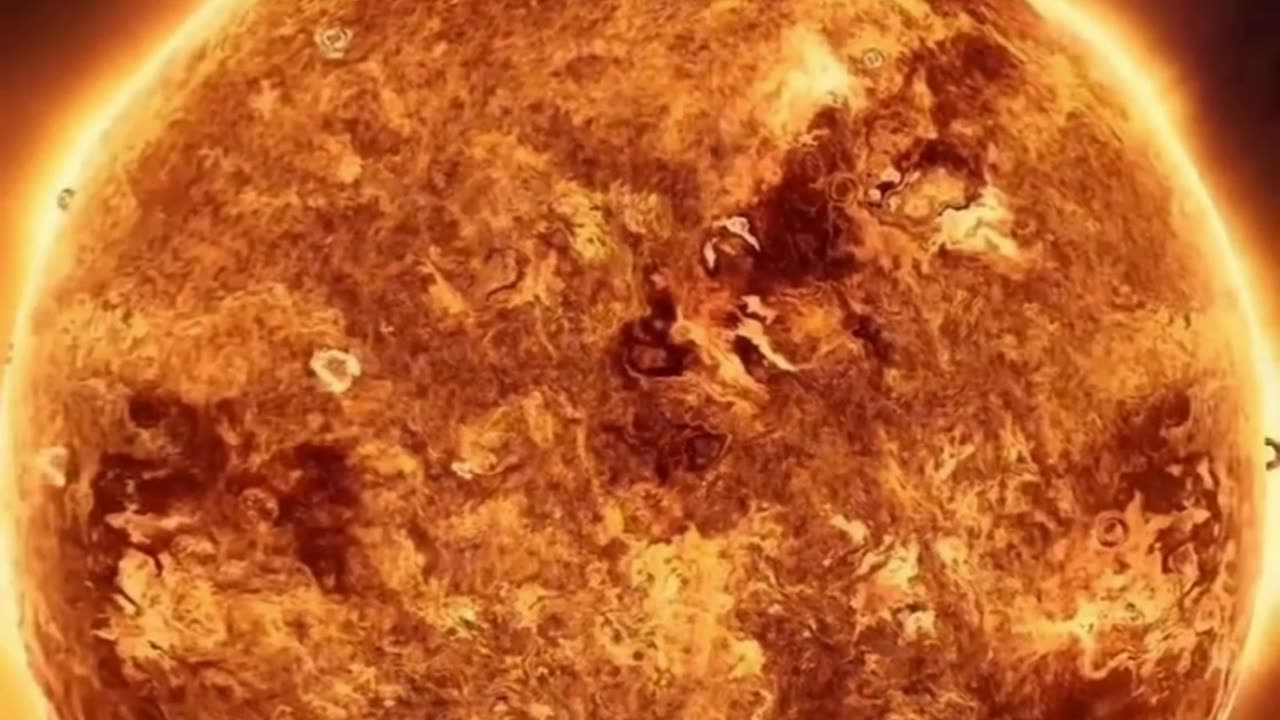Premium Only Content

🌞 The Sun: Our Solar System's Mighty Middleweight! 🌟 | Epic Space Size Comparison |
The sun is our solar system's most massive object, but what size is it ☀️ ?
It is the largest object in the solar system, but how big is the sun when compared to the rest of the stars in the Milky Way galaxy? The sun is classified as medium-sized among these hundreds of billions of stars.
The sun is nearly a perfect sphere. Its equatorial diameter and its polar diameter differ by only 6.2 miles (10 km). The mean radius of the sun is 432,450 miles (696,000 kilometers), which makes its diameter about 864,938 miles (1.392 million km). You could line up 109 Earths across the face of the sun, according to NASA. The sun's circumference is about 2,715,396 miles (4,370,006 km).
It may be the biggest thing in this neighborhood, but the sun is just average compared to other stars. Betelgeuse, a red giant, is about 700 times bigger than the sun and about 14,000 times brighter.
"We have found stars that are 100 times bigger in diameter than our sun. Truly those stars are enormous," NASA says on its SpacePlace website. "We have also seen stars that are just a tenth the size of our sun."
According to NASA's solar scientist C. Alex Young, if the sun were hollow, it would take about one million Earths to fill it.
MASS AND VOLUME
The total volume of the sun is 1.4 x 1027cubic meters. About 1.3 million Earths could fit inside the sun, according to NASA's statistics. The mass of the sun is 1.989 x 1030 kilograms, about 333,000 times the mass of the Earth. The sun contains 99.8 percent of the mass of the entire solar system, leading astronomers Imke de Pater and Jack J. Lissauer, authors of the textbook Planetary Sciences, to refer to the solar system as "the sun plus some debris".
#deepspace #nasa #nasawebb #nebula #interstellar #space #reelsvideos #astro #space #blackhole #galaxy #reels #cosmos #universe #astronomy #telescope #darkmatter #spaceexploration #celestial #✨️
-
 1:05:19
1:05:19
Sarah Westall
4 hours agoDying to Be Thin: Ozempic & Obesity, Shedding Massive Weight Safely Using GLP-1 Receptors, Dr. Kazer
28K8 -
 54:38
54:38
LFA TV
1 day agoThe Resistance Is Gone | Trumpet Daily 12.26.24 7PM EST
11.9K3 -
 58:14
58:14
theDaily302
13 hours agoThe Daily 302- Tim Ballard
30.1K1 -
 13:22
13:22
Stephen Gardner
6 hours ago🔥You'll NEVER Believe what Trump wants NOW!!
72.7K206 -
 54:56
54:56
Digital Social Hour
1 day ago $8.21 earnedDOGE, Deep State, Drones & Charlie Kirk | Donald Trump Jr.
42K4 -
 DVR
DVR
The Trish Regan Show
8 hours agoTrump‘s FCC Targets Disney CEO Bob Iger Over ABC News Alleged Misconduct
48.7K34 -
 1:48:19
1:48:19
The Quartering
9 hours agoElon Calls White People Dumb, Vivek Calls American's Lazy & Why Modern Christmas Movies Suck!
127K102 -
 2:08:42
2:08:42
The Dilley Show
10 hours ago $33.55 earnedH1B Visa Debate, Culture and More! w/Author Brenden Dilley 12/26/2024
112K24 -
 4:55:59
4:55:59
LumpyPotatoX2
12 hours agoThirsty Thursday on BOX Day - #RumbleGaming
107K5 -
 1:04:52
1:04:52
Geeks + Gamers
11 hours agoDisney RATIO'D on Christmas Day | Mufasa Embarrassed By Sonic 3
79.6K9